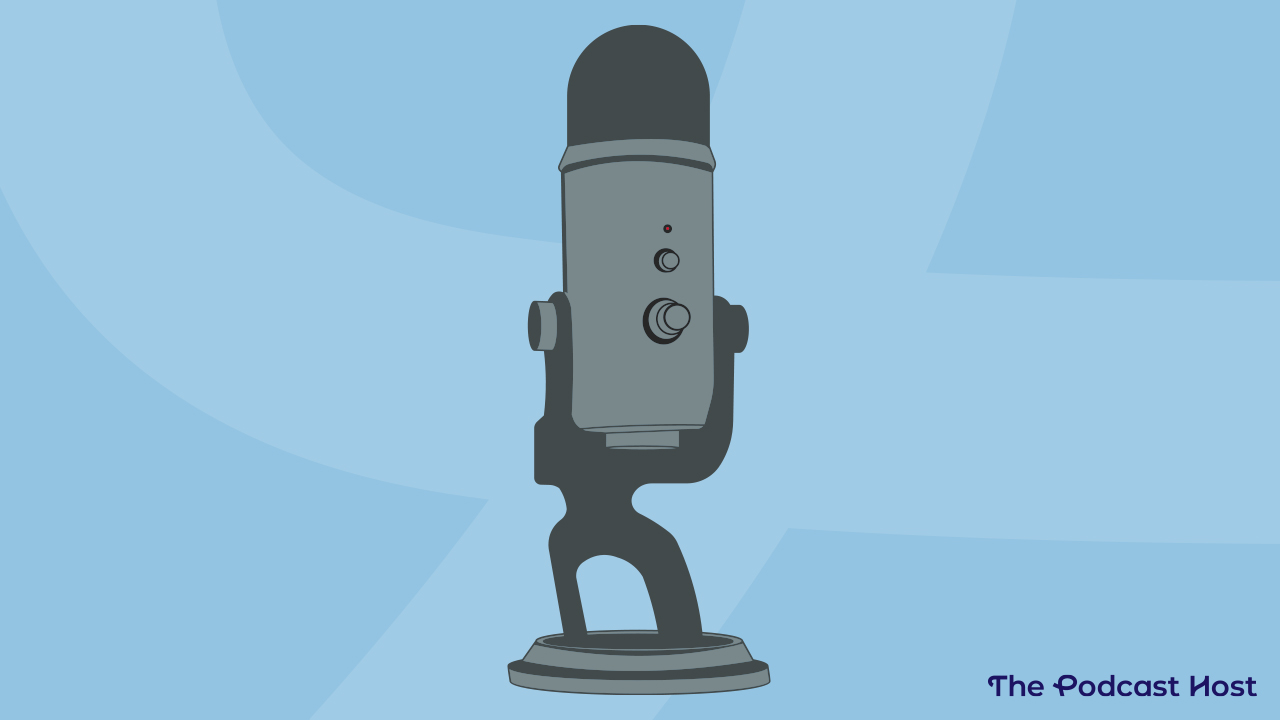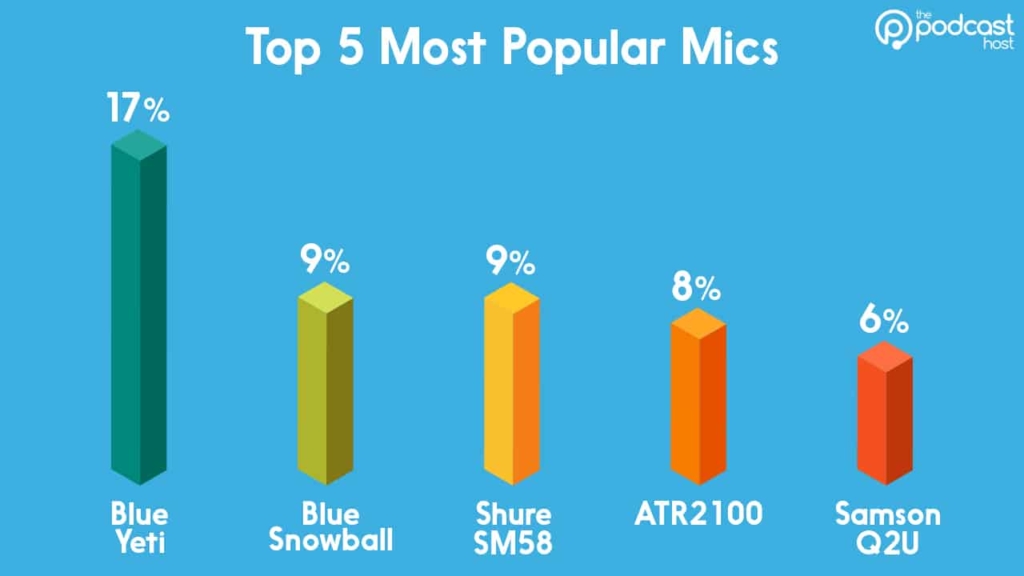Is a Blue Yeti Worth It in 2024? What You Need to Know

The Blue Yeti’s been a part of podcasting longer than Spotify, Joe Rogan, and even… this website!
Yep, back in 2009, your great great grandad listened to many a podcast on his horse-powered iPod – and they were all recorded on the Blue Yeti.
By the way, be sure to check out our Blue Yeti microphone review, if you haven’t done so already.
When the Yeti turned 10 (I’ll let you do the maths), we ran our Podcaster Gear survey, and it still turned out to be the most popular model of mic amongst respondents.

But is the Blue Yeti worth it, or does your average new podcaster simply buy one because it’s so well known?
Well, as it happens, that’s exactly the purpose of this post. I’m going to quickly run through the Yeti’s pros, cons, and even provide some alternatives. Let’s dive in…
Pros: What Makes the Blue Yeti Worth It?
You can pick up a Blue Yeti brand new for about $120. I’d argue that you can buy a great podcasting mic for almost half that, but more on that soon.
What you’re getting with the Yeti is a great-looking mic that works right out of the box on its own built-in stand. It’s a USB mic so you don’t need any additional gear to use it, either.
The Yeti also has four settings on it, which – in theory – make it suitable for recording various podcast formats. You can use it solo, with a co-host, or even with a group of people gathered around it. The group recording approach is often referred to as a “roundtable”, but you can use a square table if you’d prefer.
Table shape aside, buying the equipment needed to record 2-4 people in the same room together can cost more than double the price of a single Blue Yeti. So obviously, it’s worth it, right?

Cons: Downsides of the Yeti
The problem with the Yeti’s all-purpose settings is that most of them simply don’t sound good. This is no fault of the mic itself. It’s just that sharing a mic with others is bad practice.
In an ideal world, each person would record into their own mic. Everyone has their own unique voice and presentation style. From the volume you speak at to the distance you’ll typically put between you and your mic – these are key factors in everything from setting gain levels to which post-processing you’ll apply.
Record multiple participants into one single audio track via the Yeti (or any other mic), and you’re never going to make it sound great. At best, it’ll be passable.
The Yeti performs well as a solo mic (which includes recording remote interviews), but if you want to add in more people locally, there are better options out there. I’ll cover these below.
To wrap this section up, though, the Yeti’s built-in stand is a big plus if you want a mic that works right out of the box. However, a desk stand won’t give you an optimal recording position, and you could end up hunched over the mic. If your podcast is about working in the bell tower at Notre Dame then this is fine, but for most, it’s going to be a problem.
The solution here is to spend more money and buy a mic stand or boom arm. But with each additional purchase you make, the less the Blue Yeti feels like it’s worth it.
Deeper Dive: Reasons Your Blue Yeti Sounds Bad
Alternatives to the Blue Yeti
If the Yeti’s downsides sound like they’re going to be a problem for you, what are some better options?
Our most recommended beginner mic is the Samson Q2U, which you can pick up for about $70. Like the Yeti, it comes with a desk stand. But you can often find it in podcasting bundles with a boom arm for less than $80!
One big bonus of the Q2U is that it works in both USB and XLR form – so if you upgrade to a digital recorder, USB audio interface, or mixer further down the line, you won’t need to buy a new mic. Remember, the Yeti only works via USB. You can’t effectively plug 2 Yetis into the same computer, either.
The benefits of the Q2U can be found in other similar budget mics, too. Just be mindful that you’ll want one mic for each participant, and should never be sharing.
If you’re looking to record multiple people in the same room, you might opt for a Q2U per person, and run them into a Zoom PodTrak P4. The PodTrak P4 is a dedicated podcast recorder and you can usually get one brand new for around $220.
So, Is the Blue Yeti Worth It?
The Blue Yeti is a solid solo mic, but it isn’t the cheapest, and you’ll eventually want to buy some additional gear for it.
If you already own one, then it’ll be more than good enough for recording monologue-style shows or remote conversations. Just be sure to put some checks in place to make sure you’re using it properly.
If you’re shopping around for a new podcasting mic, though, then hopefully this post has helped save you a bit of time, hassle, and money.
A final hat-tip to the Yeti, though, as I don’t want to sound overly critical of it. This mic has been a big part of podcasting for well over 10 years and its popularity doesn’t look like waning any time soon.
I wonder if, when it turns 20 in 2029, Blue might release a special “Grey Yeti” model to celebrate?
